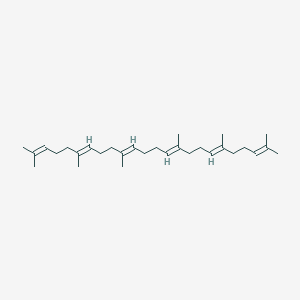-
Categories
-
Pharmaceutical Intermediates
-
Active Pharmaceutical Ingredients
-
Food Additives
- Industrial Coatings
- Agrochemicals
- Dyes and Pigments
- Surfactant
- Flavors and Fragrances
- Chemical Reagents
- Catalyst and Auxiliary
- Natural Products
- Inorganic Chemistry
-
Organic Chemistry
-
Biochemical Engineering
- Analytical Chemistry
- Cosmetic Ingredient
-
Pharmaceutical Intermediates
Promotion
ECHEMI Mall
Wholesale
Weekly Price
Exhibition
News
-
Trade Service
I don't know when it will start, young people have become the main force of hair loss and begin to feel the "middle-age crisis" in advance
.
According to the 2019 survey data of the National Health Commission, the number of people with hair loss in China has exceeded 250 million, which is 20 years earlier than the age of hair loss of the previous generation
Recently, researchers from the Chinese Academy of Sciences published an online article entitled miR-24 controls the regenerative competence of hair follicle progenitors by targeting Plk3 in the internationally renowned journal Cell Reports, revealing a miRNA-mediated skin follicle (HF) The regeneration mechanism of precursor cells provides important clues for the treatment of hair loss
.
As we all know, the growth of new hair is driven by adult hair follicle stem cells (HFSC).
Therefore, adult stem cells (SCs), as a star in the regenerative medicine field, have been the main force in human hair growth in recent years due to their superior self-renewal ability.
Under normal circumstances, adult stem cells are in a hibernating state for a long time, and will regain their vitality when they receive regeneration signals from the outside world
.
Therefore, for adult stem cells, it is important to maintain sensitivity to the surrounding microenvironment at all times, but how to mobilize the inherent sensitivity of adult hair follicle stem cells to growth stimuli is currently unclear
In order to find out the key factors that may be involved in regulating the growth of hair embryo (HG) in adult hair follicle stem cells in vivo, the researchers used fluorescence activated cell sorting (FACS) to isolate HG cells and performed qRT-PCR on HFSC-rich miRNAs Analysis
.
Research data shows that miR-24 is significantly down-regulated during hair follicle activation, which further supports the view that miR-24 is a negative regulator of skin hair follicle (HF) precursor cell activation
Not only that, after further verification, it was found that in a culture environment lacking growth factors, miR-24 in mouse epidermal keratinocytes (MK) would be significantly up-regulated first, and the overexpression of miR-24 in MK would delay hair follicles The activation of precursor cells and the advancement of the hair cycle, on the contrary, if the gene is knocked out, the hair cycle will be shortened
.
This indicates that the ablation of miR-24 will enhance the sensitivity of skin epithelial cells to growth stimuli
So, who is the central figure that caused this series of reactions? Researchers observed a series of miR-24-related gene expression changes based on RNA-seq and discovered an important miR-24 target "Plk3 protein"
.
The results of double verification in vivo and in vitro show that the protein can "rescue" the growth competition disadvantage caused by the overexpression of miR-24, and serve as a key miR-24 target for the growth of HF precursor cells in vivo
It is worth mentioning that the study also verified the hair loss drug minoxidil approved by the U.
S.
Food and Drug Administration (FDA).
The study showed that inhibiting the overexpression of miR-24 can significantly increase minoxidil.
The curative effect of (minoxidil) further proves that miR-24 has the potential as a new type of hair growth treatment target
All in all, this study suggests that miR-24 can be used as a key factor that limits the regeneration potential of skin hair follicle precursor cells, and provides new ideas for the treatment of hair loss.
It is hoped that the "top priority" for humans in the future can be resolved as soon as possible and no longer worry about it.
Hair loss
references:
1.
https://doi.
org/10.
1016/j.
celrep.
2021.
109225
I don't know when it will start, young people have become the main force of hair loss and begin to feel the "middle-age crisis" in advance
.
According to the 2019 survey data of the National Health Commission, the number of people with hair loss in China has exceeded 250 million, which is 20 years earlier than the age of hair loss of the previous generation
.
Obviously, hair loss has become an irreversible trend
.
For this reason, people began to painstakingly find a cure for hair loss
.
Recently, researchers from the Chinese Academy of Sciences published an online article entitled miR-24 controls the regenerative competence of hair follicle progenitors by targeting Plk3 in the internationally renowned journal Cell Reports, revealing a miRNA-mediated skin follicle (HF) The regeneration mechanism of precursor cells provides important clues for the treatment of hair loss
.
As we all know, the growth of new hair is driven by adult hair follicle stem cells (HFSC).
Therefore, adult stem cells (SCs), as a star in the regenerative medicine field, have been the main force in human hair growth in recent years due to their superior self-renewal ability.
.
Under normal circumstances, adult stem cells are in a hibernating state for a long time, and will regain their vitality when they receive regeneration signals from the outside world
.
Therefore, for adult stem cells, it is important to maintain sensitivity to the surrounding microenvironment at all times, but how to mobilize the inherent sensitivity of adult hair follicle stem cells to growth stimuli is currently unclear
.
For this reason, in this latest research, researchers have conducted in-depth explorations on this issue
.
In order to find out the key factors that may be involved in regulating the growth of hair embryo (HG) in adult hair follicle stem cells in vivo, the researchers used fluorescence activated cell sorting (FACS) to isolate HG cells and performed qRT-PCR on HFSC-rich miRNAs Analysis
.
Research data shows that miR-24 is significantly down-regulated during hair follicle activation, which further supports the view that miR-24 is a negative regulator of skin hair follicle (HF) precursor cell activation
.
Not only that, after further verification, it was found that in a culture environment lacking growth factors, miR-24 in mouse epidermal keratinocytes (MK) would be significantly up-regulated first, and the overexpression of miR-24 in MK would delay hair follicles The activation of precursor cells and the advancement of the hair cycle, on the contrary, if the gene is knocked out, the hair cycle will be shortened
.
This indicates that the ablation of miR-24 will enhance the sensitivity of skin epithelial cells to growth stimuli
.
So, who is the central figure that caused this series of reactions? Researchers observed a series of miR-24-related gene expression changes based on RNA-seq and discovered an important miR-24 target "Plk3 protein"
.
The results of double verification in vivo and in vitro show that the protein can "rescue" the growth competition disadvantage caused by the overexpression of miR-24, and serve as a key miR-24 target for the growth of HF precursor cells in vivo
.
It is worth mentioning that the study also verified the hair loss drug minoxidil approved by the U.
S.
Food and Drug Administration (FDA).
The study showed that inhibiting the overexpression of miR-24 can significantly increase minoxidil.
The curative effect of (minoxidil) further proves that miR-24 has the potential as a new type of hair growth treatment target
.
All in all, this study suggests that miR-24 can be used as a key factor that limits the regeneration potential of skin hair follicle precursor cells, and provides new ideas for the treatment of hair loss.
It is hoped that the "top priority" for humans in the future can be resolved as soon as possible and no longer worry about it.
Hair loss
.
(Biological Exploration)
references:
1.
https://doi.
org/10.
1016/j.
celrep.
2021.
109225







